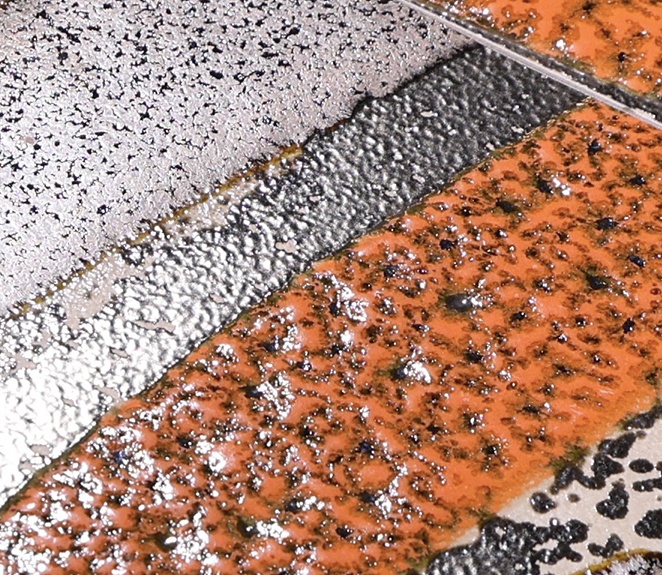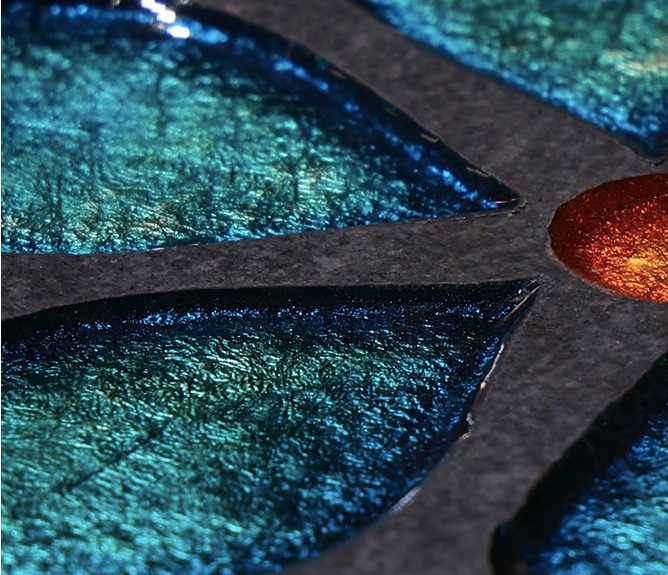HISTORY OF THIRD FIRING
The art of ceramics dates back to about 10,000 years ago. It has been known since prehistoric times and it is thought that the first artifacts can be traced back to the Neolithic period.
The painted pottery was subsequently exported starting from Anatolia and the Syriac territories towards Europe around the third millennium BC.
The introduction of vitreous painting, in use starting from the second millennium BC. in Mesopotamia, further improved wear resistance and characteristics aesthetic.
In fact, it seems that the third firing technique was born and developed simultaneously in Persia and Mesopotamia, precisely in the cities of Kashan and Baghdad, in the 9th century. With the Islamic conquest, it spread throughout North Africa and Spain and then reached Italy in 1500 where ad hoc ovens were already used. Thanks to the push that the Renaissance gave to all the arts, the third firing also developed further in this historical period. After the last splendor of the seventeenth century this process disappeared and only towards the end of the 1800s was a technique that had disappeared for almost two hundred years reintroduced.
At the same time, in 1800 the production of ceramics will begin to take on industrial characteristics and, in particular in Italy, this race never ended until today.
The third firing sector, in fact, has always been a precious ally of the ceramic industries and manufacturers and suppliers of raw materials for producing tiles, allowing them to conquer new markets.
The division of the production cycle between support production and glazing and the consequent fragmentation of production, typical of the 1970s, gradually led to the birth of auxiliary companies. The third firing activity, in fact, was often carried out by small companies that allowed the ceramic industries to create lines of high quality artistic tiles, completing their product portfolios.

COLORS & LUSTRES
Colors: The third firing colors used in artistic ceramics are used in third firing and the surface on which they are applied must be smooth and waterproof. The decoration firing requires different creative techniques, specific raw materials & firing temperatures for achieving very unique & artistic decors.
The firing can go upto even 3 times depending on the design & effects needed for the final product.
Lustures & Precious Metals : Another category of third-firing “colors” are all lustres (colors with a metallic effect) and metals (gold, platinum, rose gold etc.). They contain 22 carat gold & other real precious materials in a paste form for ease of application with a certified precious metal content on each batch.

THE ORIGIN OF THIRD FIRING
Third firing decoration is a ceramic technique used since ancient times applied above all to tiles, tableware and objects.
The term third firing, in the ceramic field, refers to the third firing- the additional firing that is applied to an object or a tile that has already undergone two phases of firing during its manufacture.
First firing of the base tile or bisque firing
Second firing of the glaze or glazing, to subsequently add the decorations in the multiple techniques.
When we talk about third firing, however, we usually refer to the specialised ceramic sector that is completely dedicated to decoration of finished mass produced ceramics.
The decoration obtained can be more or less bright or even opaque, depending on the colours used, it is indelible, unalterable over time and very resistant to mechanical wear, as well as to most chemical agents.
specific raw materials & firing temperatures for achieving
very unique & artistic decors.
THIRD FIRING TODAY
The advent of Digital printing technology came as a big boon to the tiles producers, who had to depend on the Third Firing Decoration producers for complimenting their product range. This changed the dynamics of the decorative tile segment & turned it on its head. There was no need of additional decorative work – the digital printers were far better & more efficient to print anything required by the market.
The third firing sector saw huge churning & 90% of the units closed down all over the world. This period of 2015 onwards led to the reinvention of VRIDA as a brand & a product line that has charted a unique journey – adding never before techniques & effects to its product range. The difficult period was seen as the perfect opportunity to “Imagine Beyond” – creating a range of products that makes VRIDA the trendsetters in the Indian market – competing with the best products from around the globe. Our in house facilities boast of all the possible decorative processes & equipments to make the most CREATIVE CERAMIC DECOR TILES to match the decors made anywhere around the world.
Truly unique & one of a kind Handcrafted Ceramic Decor.


